Tesla has updated the Cybertruck online configurator to address the controversy surrounding the Cybertruck’s aluminium frame and towing capability.
Tesla's official site now mentions that the Cybertruck has a “high-strength steel tow bar.”
Tesla included this line in the Cybertruck online configurator, specifically in the section detailing the Cybertruck’s towing capacity.
Under “Towing,” Tesla now specifically notes that the Cybertruck features a steel tow hitch.
Tesla writes…
“Towing
High-strength, Class IV steel tow bar”
Tesla also provides more information about the Cybertruck’s towing capacity and enumerates all the features included in the Tow package.
Tesla writes…
“Tow package
Towing capacity up to 11,000 lbs
Trailer controller
Integrated trailer controller”
The part about the 11,000 lbs towing capacity was already on the Cybertruck online configurator; however, what’s new is that the EV maker has now added a line specifically spelling out that the Cybertruck has a steel tow hitch.
This change aims to address concerns regarding the Cybertruck’s aluminum frame and its towing performance.
So far, we’ve seen a couple of videos showing the Cybertruck’s tow hitch separate from the vehicle frame during severe testing scenarios.
Given that the Cybertruck hitch fell off during extreme testing conditions, Tesla fans defend the vehicle, claiming it performed according to spec.
However, even if this is true, it’s still surprising to see the Cybertruck’s rear subframe snap in half while the tow hitches on a Ford F-150 and a 20-year-old Chevrolet pickup, which were subjected to the same torture test, remained intact.
Given these circumstances, it’s easy to see why Tesla is trying to reassure Cybertruck buyers by specifically pointing out the tow hitch is made of high-strength steel rather than aluminum.
The Class IV, high-strength steel tow hitch is good; however, the primary concern when it comes to Cybertruck towing is not the hitch's durability, but the potential failure of the Cybertruck’s aluminum rear giga casting under extreme stress conditions.
This is the single giant cast aluminium part that makes up the Cybertruck’s rear subframe.
In more conventional ladder-frame pickup truck construction, the chassis is made out of high-strength steel, and the body sits atop this sturdy steel base.
This is the construction method that nearly all full-sized pickup trucks currently on the market use.
When using the body-on-frame construction method, high-strength steel reinforces the vehicle from below, with the tow hitch mounted to this robust foundation.
This design enables the tow hitch to effectively transfer forces while towing, greatly minimizing the chance of a sudden vertical force spike that could damage the rear subframe.
However, one drawback of the body-on-frame construction method is that the strong steel frame significantly increases weight.
In comparison, the Cybertruck features a unibody/exoskeleton chassis design. Tesla further streamlines the monocoque approach by utilizing large, front and rear cast aluminum sections, which the EV maker refers to as giga castings.
This reduces the chassis weight compared to the body-on-frame approach. However, since the chassis is made of aluminum rather than steel, it is more susceptible to breakage, especially when struck by concentrated force in a small area.
Returning to Tesla’s latest update, the company noted that the Cybertruck is equipped with a tow hitch made from high-strength steel, which is encouraging. However, as previously mentioned, potential towing issues are likely unrelated to the tow hitch itself, but instead to the aluminum rear subframe.
When faced with severe force, the steel tow hitch is unlikely to break; however, the force transmitted to the aluminium gigacasting will lead to a failure in the rear subframe.
Considering this, it’s not clear whether the high-strength steel tow hitch will alleviate concerns about potential problems with the aluminum gigacasting during towing.
However, please let me know what you think in the comments. Share your ideas by clicking the RED “Add new comment” button below. Also, be sure to visit our site, torquenews.com/Tesla, regularly for the latest updates.
Image: Courtesy of Tesla, Inc
For more information, check out: A Cybertruck Owner Says There is So Much Water Trapped Inside His Truck Floor That It Sloshes Around When He Drives, But Adds, “Tesla for Life, I’ll Never Switch Brands”
Tinsae Aregay has been following Tesla and the evolution of the EV space daily for several years. He covers everything about Tesla, from the cars to Elon Musk, the energy business, and autonomy. Follow Tinsae on Twitter at @TinsaeAregay for daily Tesla news.


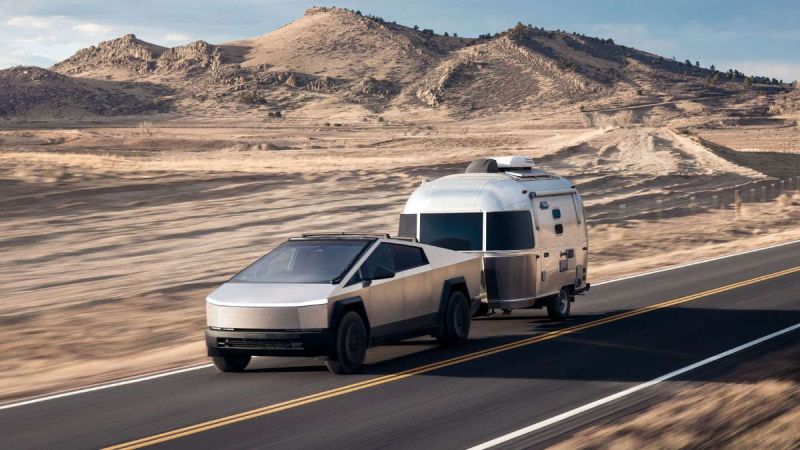




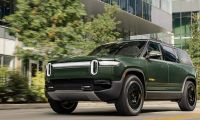

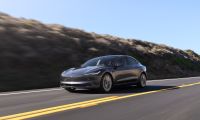
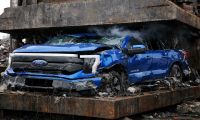
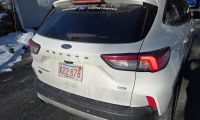
Comments
But it doesn't matter at…
Permalink
But it doesn't matter at this point. The world knows that the CT is the DeLorean of the 21st century. Nothing can be done to save it. Why do you think Tesla stopped taking cybertrucks on trade? It's kind of over for the CT.
Just so we're clear here,…
Permalink
Just so we're clear here, gluing stainless steel panels to the exterior of the truck does not make it an exoskeleton design. Everyone knows that!
They've known about this how…
Permalink
They've known about this how long and are finally doing something about it? I like my model 3, but Tesla aren't exactly known for their quality.
Report of tie rod ends…
Permalink
Report of tie rod ends coming off and loosing control at 70 mph makes me concerned they are not addressing the big problem, no follow up on tie rod ends design despite the report
In paragraph 20 it sounds…
Permalink
In paragraph 20 it sounds like you're say that the design of the the steel chassis (as opposed to the cast aluminum subframe) will greatly reduce the chances of sudden vertical force spike...
Such vertical forces are caused by road hazards, more likely off road impediments, and the driver's reaction.
Would those extreme conditions you speak of also include an extremely overloaded vehicle. The tongue weight ,properly distributed, of most trailers doesn't come close to exceeding the truck's payload capacity.
One of those extreme conditions would likely be a total lack of common sense.
That picture is hilareous! …
Permalink
That picture is hilareous! 50 years ago Airstream's banner ad was that one could tow an Airstream trailer with a bicycle.
Can we stop suggesting the…
Permalink
Can we stop suggesting the Cybertruck has an exoskeleton? It's clear with the pieces flying off that they're not structural at all an it is, in fact, just a unibody car...
It is just a unibody car. A…
Permalink
In reply to Can we stop suggesting the… by Art Melon (not verified)
It is just a unibody car. A lot of what Tesla says is marketing. If I remember correctly, the hitch itself isn't the problem. Because in all of the tests, the hitch was still intact. It was what it was connected to. The subframe is the part that broke, not the hitch. This is just Tesla trying to make it seem like they fixed it, when the problem will still be there. They just need to drop the towing down to like 6 or 7k pounds. Then this wouldn't be a huge problem. One video showed that it took 10000lbs of force before it snapped. Given an 11k pound towing capacity, it should be able to do 10k for hours not 11k for minutes. It might be better if they didn't call it a truck. Just a big El Camino lol
Bingo!!! The Cybertruck's…
Permalink
In reply to It is just a unibody car. A… by Kenneth (not verified)
Bingo!!! The Cybertruck's subframe is the weak point, NOT the hitch. Tesla is just using fancy language & excuses to hide that fact.
While advertised as high…
Permalink
While advertised as high strength steel class 4 suggests the design is likely to fail from buckling before reaching yield. Is that a feature?
So let's get real about a…
Permalink
So let's get real about a few things.
First of all there's no doubt that you're talking about the WhistlinDiesel torture test of the Tesla Cybertruck on YouTube.
Second of all, the steel tow hitch itself did not break. The hitch was torn from the truck's rear aluminum subframe housing, around the hitch.
Aluminum has its good points and its bad points. It's very expensive as opposed to steel, and you can bet it wouldn't be used if it weren't for the heavy weight of the Cybertruck's battery to begin with.
At the end of the day, for the "average user", the aluminum subframe truck will hold up okay.
However, what's going to ultimately plague and destroy them is the various chloride salt brines that our lovely government dumps on the roads every winter, for snow and ice control.
Chloride salt brines cause chemical reactions that deteriorate metal rapidly.
The chlorides eat up steel, but they eat up aluminum even more rapidly, and by the nature of aluminum, in a much worse way.
For a moderate cost, rusted steel can generally be repaired, up to a point. Corroded aluminum, on the other hand, is extremely expensive to repair. Badly compromised aluminum typically has to be completely replaced, because it deteriorates much differently than steel.
Aluminum chassis vehicle owners are going to find out soon enough, and they won't be pleased.